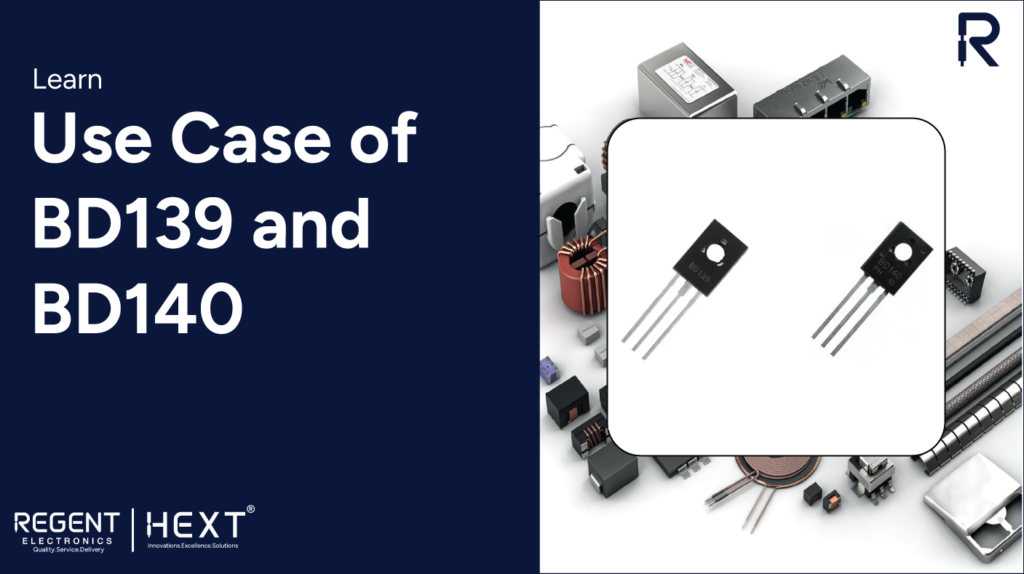
Applications of BD139 and BD140 Transistors in Electronics Projects
At Regent Electronics, we offer a diverse range of transistors, including the BD139 and BD140, which are essential components for various electronic applications. In this blog, we’ll provide a detailed overview of the use cases for these powerful transistors, commonly used in audio amplification, motor driver circuits, and switching. These transistors are highly favored due to their reliable performance and versatility.
BD139 Transistor – A Versatile NPN Transistor for Audio Applications
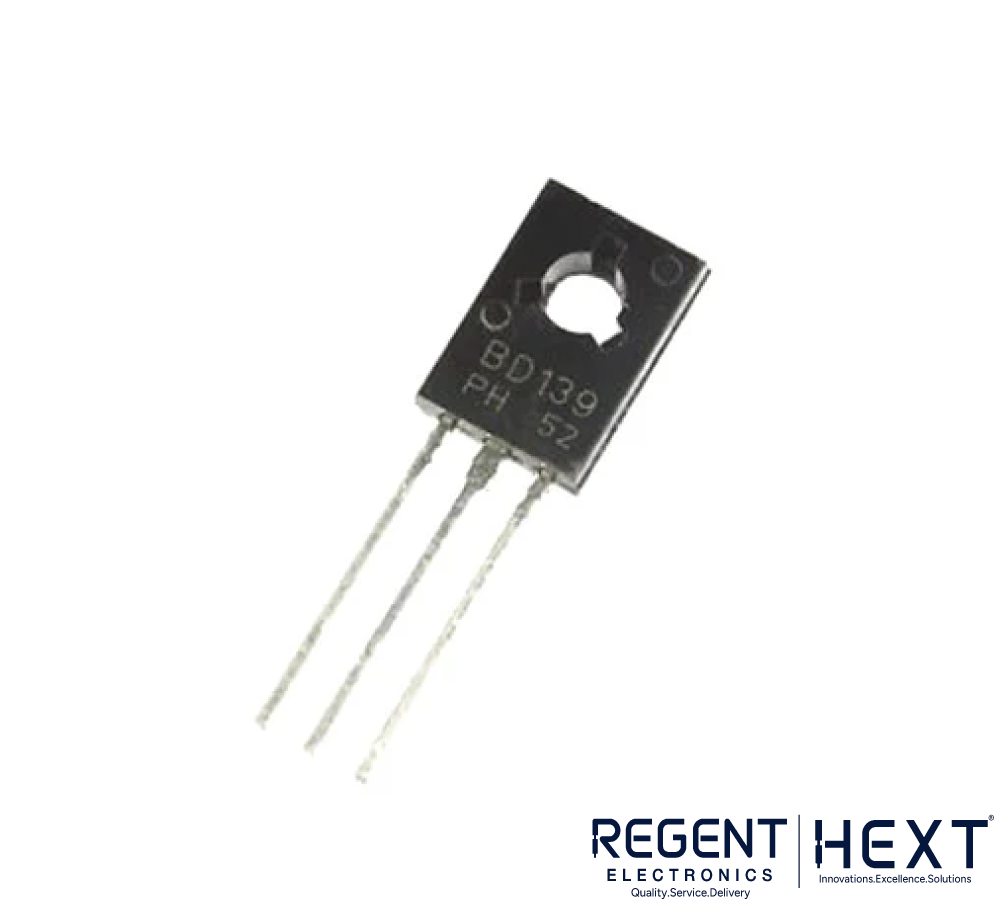
The BD139 is an NPN transistor, specifically designed for use in audio applications. It operates with the collector and emitter in a reverse-biased configuration while the base pin is grounded and forward-biased when a signal is applied to the base. This transistor is known for its high current gain, with a maximum gain of 250, indicating its ability to amplify signals effectively.
With a maximum collector current of 1.5A, the BD139 is capable of driving loads that do not exceed this current. The base current (IB) should not exceed 0.5A for optimal performance. The BD139 is widely used in amplifier circuits where the need for amplification without distortion is crucial. It is often used in audio power amplifiers and other applications requiring low to medium-power transistors.
BD140 Transistor – A Reliable PNP Transistor for High Power Applications
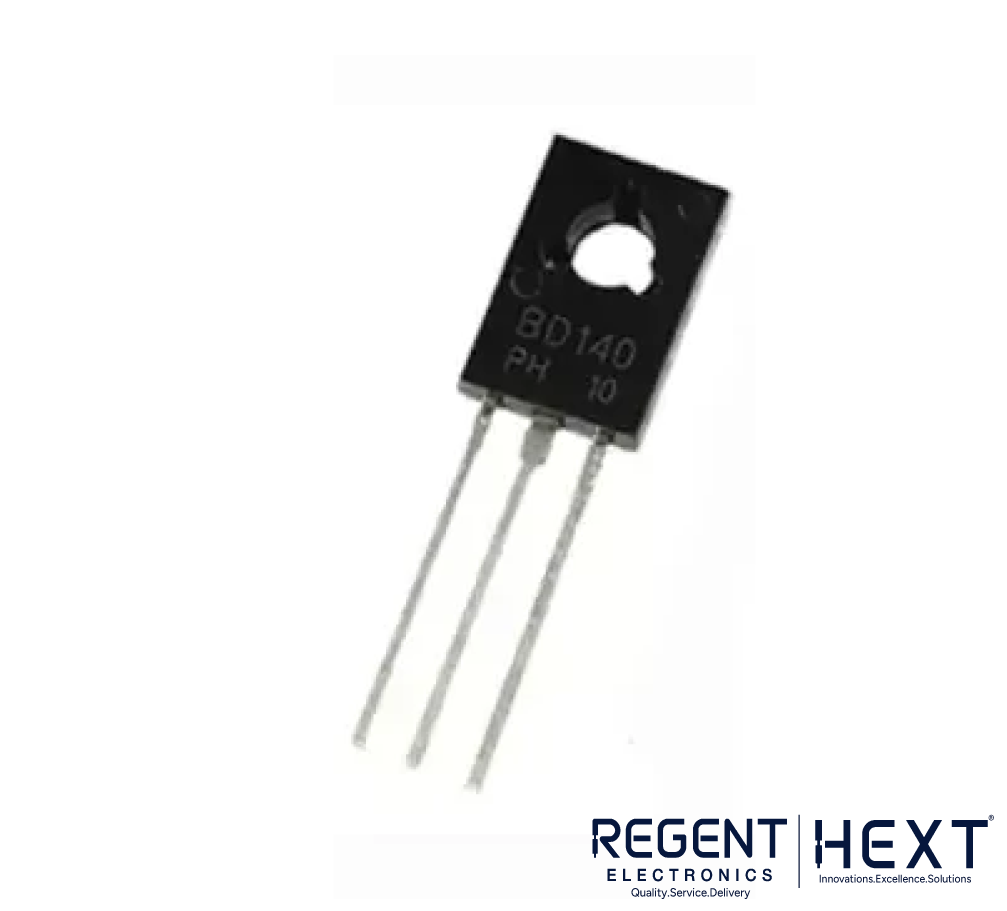
The BD140 is a PNP transistor, commonly used in electronic circuits that require high-power handling capabilities. It can handle currents up to 1.5A, making it suitable for driving high-power LEDs, relays, motors, and similar devices. The BD140 can operate with a collector-emitter voltage of 100V and a collector-base voltage of 80V, making it ideal for circuits with a DC voltage of 80V or lower.
Additionally, the BD140 transistor can dissipate up to 12.5 watts of power, making it highly suitable for audio amplifier circuits where higher power dissipation is necessary. Its saturation voltage is 0.5V, which is an important specification for various applications, including switching and amplification.
BD139 and BD140 – Key Specifications
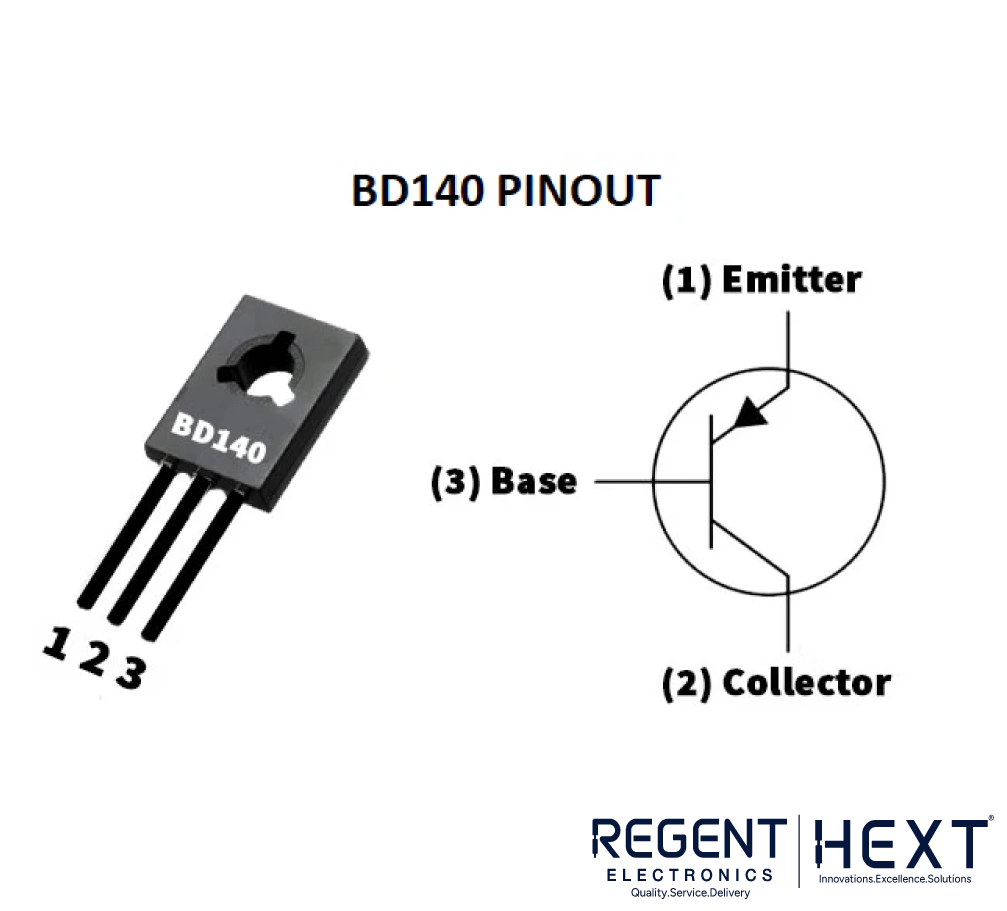
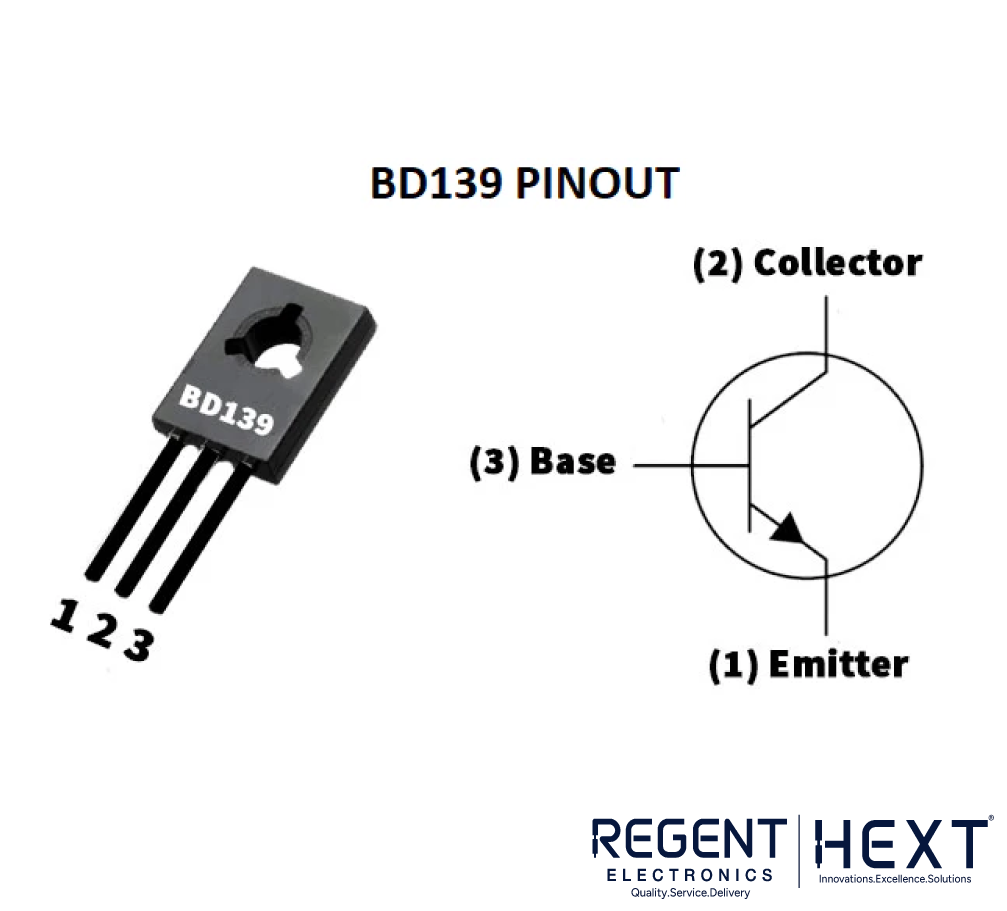
| Specification | BD139 | BD140 |
| Package Type | TO-220 | TO-220 |
| Transistor Type | NPN | PNP |
| Collector-Emitter Voltage | 80V | 100V |
| Collector-Base Voltage | 80V | 80V |
| Collector Current | 1.5A | 1.5A |
| Base Current (IB) | 0.5A | 0.5A |
| Power Dissipation | 12W | 12.5W |
| Saturation Voltage (VCE) | 0.5V | 0.5V |
Applications of BD139 and BD140 Transistors
BD139 and BD140 as Switches
Both the BD139 and BD140 transistors are commonly used as switches in electronic circuits. When used in switching applications, the transistors operate in Saturation and Cut-Off regions. In this configuration:
- BD139 (NPN): When the base is activated, current flows from the collector to the emitter, allowing the transistor to act as an on-switch.
- BD140 (PNP): In this case, the base is negatively biased relative to the emitter, and when the base is activated, the transistor allows current to flow from the emitter to the collector, enabling the switch to turn on.
This switching ability makes both transistors perfect for applications involving high current switching and power management.
BD139 and BD140 as Amplifiers

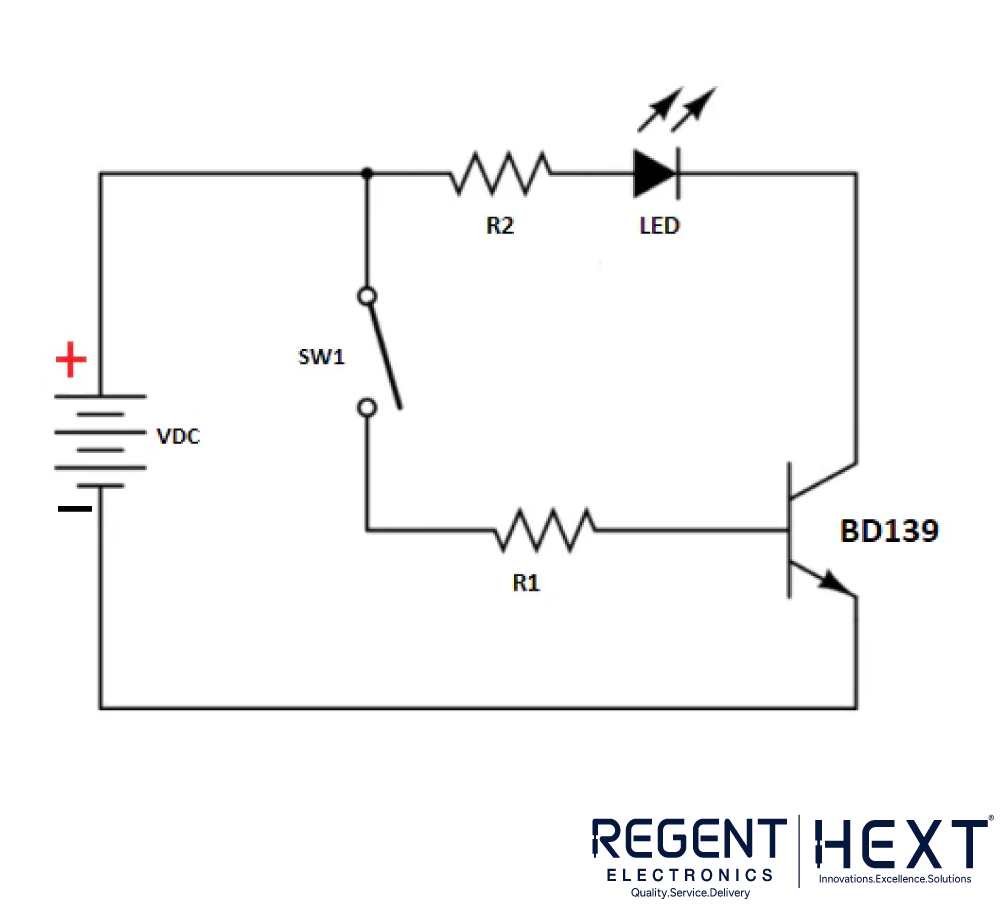
Both BD139 and BD140 can be used as amplifiers in various industrial and school projects. For instance, a Class-AB audio power amplifier using these complementary transistors can provide a 2-watt output with minimal harmonic distortion and wide frequency response. Here’s how they are utilized in this amplifier:
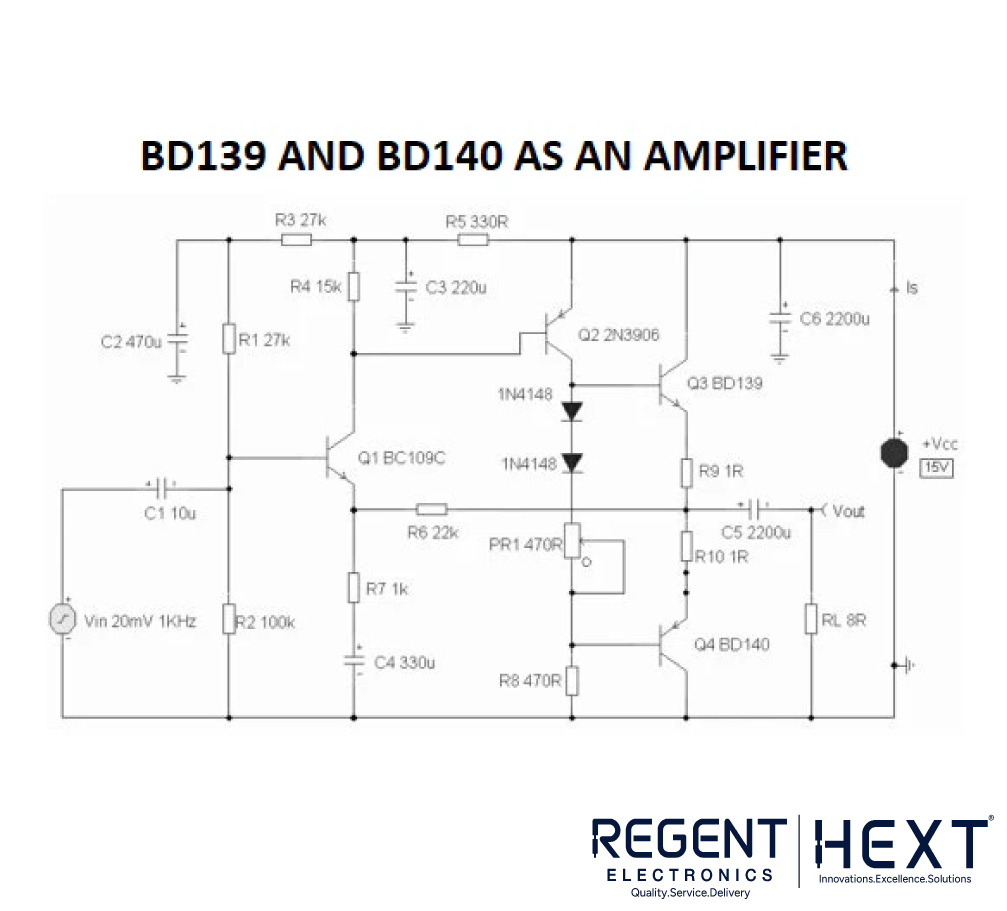
- The amplifier is capable of driving 8Ω speakers with a 5-watt output.
- A potentiometer regulates the quiescent current through the BD139 and BD140 transistors, which are connected in a 470Ω circuit.
- Adjusting the resistor values allows for a trade-off between minimal distortion and low current in the output transistors.
- Temperature stability is ensured with the addition of resistors R9 and R10.
This setup demonstrates how BD139 and BD140 transistors help achieve high-quality amplification with low distortion.
BD139 and BD140 in Motor Driver Circuits

Another significant application of the BD139 and BD140 transistors is in motor driver circuits, particularly in the H-Bridge configuration. When driving DC motors, these transistors act as amplifiers that provide enough power to the motors, which a microcontroller alone cannot supply.
In an H-Bridge circuit, the BD139 and BD140 transistors are used to:
- Drive two DC motors smoothly.
- Control the direction of motor rotation.
- Provide high current to motors while ensuring the system runs efficiently.
A critical consideration when using these transistors in motor driver circuits is heat dissipation. Since these power transistors generate significant heat, it is crucial to add heatsinks to prevent overheating, which is accommodated by the hole provided in the transistor package.
Conclusion
The BD139 and BD140 transistors from Regent Electronics offer reliable performance and versatility, making them suitable for a wide range of applications, including audio amplification, switching circuits, and motor driver applications. Their ability to handle high current and voltage, along with their high power dissipation capabilities, make them indispensable in industrial, educational, and DIY electronics projects.
Looking for reliable BD139 and BD140 transistors for your next project? Visit Regent Electronics today to explore our range of high-performance transistors and electronic components.
